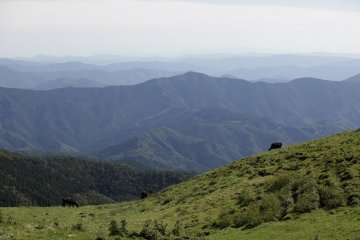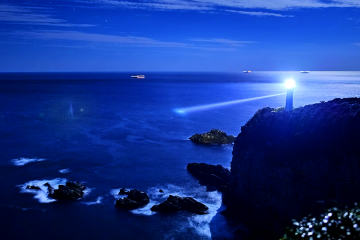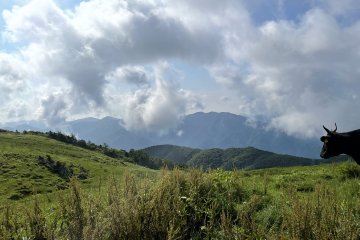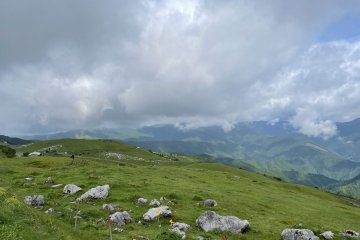The Tengu Highlands of the Shikoku Karst National Park, a 25 km-long area on the ridge line between Kochi and Ehime prefectures. Reaching up to 1500 meters, this plateau is justly considered the rooftop of Kochi.
The spiky rock formations of these mountaintop karsts are formed from limestone and dolomite, a formation that has been shaped over millennia. Karsts are not common in Japan (in fact there are only three spots in the country where you can see them) and the oddly European-looking landscapes comes as a surprise after the distinctly Japanese-looking village of Yusuhara down below.
In Japanese folklore tengu are recurring characters, bright red long-nosed goblin-type deities that fly and live in remote mountain areas. While the origins of the Tengu Highlands’ name are unclear, the remoteness and high altitude of the area would have indeed made an ideal habitat for these legendary figures.
In the parking lot of the recently refurbished Hoshifuru Village Tengu Highland hotel, there is a line and two pillars that mark the border between Kochi and Ehime prefectures. The border continues straight through the building itself, so that groups staying overnight may end up in rooms in different prefectures...
For introverts looking to escape other humans (or the summer heat), this is the place to be. Trekking along the various hiking trails on weekdays from spring to autumn, it is more likely you will encounter some of the local black and brown cows rather than other people. There is also an unusual shinrinyoku (forest bathing) therapy road, should you feel the need for some ulterior commune with nature.
Accommodation is limited to the Hoshifuru Village Tengu and camping grounds, but there is a small restaurant, as well as a shop where you can pick up supplies (including breads and desserts made with the milk from the aforementioned cows). If you are not staying overnight, the brand new planetarium (which offers 4 shows daily) will give you a taste of the starry spectacle the heavens offer up on clear nights.











